
Journal of Ovonic Research
metrics 2024
Catalyzing Innovations in Surface and Coating Technologies.
Introduction
Journal of Ovonic Research is a distinguished publication dedicated to advancing the fields of electronic, optical, and magnetic materials. Published by VIRTUAL CO PHYSICS SRL, this journal offers a platform for researchers to share innovative findings and developments that push the boundaries of technology and materials science. With an ISSN of 1842-2403 and an E-ISSN of 1584-9953, it provides an important service to the academic community, particularly within Romania and beyond. Despite its recent inception in 2011, the journal has gained traction in the academic landscape, reflecting a Q4 quartile ranking in crucial categories such as Electronic, Optical and Magnetic Materials, as well as in Physics and Astronomy. The Scopus rankings further underscore its positioning, ranking within the 25th to 37th percentile across various disciplines, making it a valuable resource for professionals and students alike. Although the journal currently operates on a non-open access basis, it remains committed to exploring the latest advancements in materials science, encouraging interdisciplinary collaboration and fostering a deeper understanding of surface, coating, and film technologies. As the field evolves, Journal of Ovonic Research stands as a beacon for scholarly communication, bridging the gap between research and practical application.
Metrics 2024
 0.20
0.20 0.90
0.90 1.10
1.10 19
19Metrics History
Rank 2024
Scopus
IF (Web Of Science)
JCI (Web Of Science)
Quartile History
Similar Journals
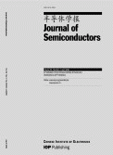
Journal of Semiconductors
Shaping the future of electronic, optical, and magnetic materials.Journal of Semiconductors, published by IOP Publishing Ltd in the United Kingdom, is a leading scholarly journal that has established itself as a premier platform for disseminating high-quality research in the fields of condensed matter physics, electrical and electronic engineering, and materials chemistry. Since its inception in 2009, the journal has featured research articles that delve into the fundamental and applied aspects of semiconductor technologies, making significant contributions to advancements in electronic, optical, and magnetic materials. The journal boasts an impressive Q1 ranking in several categories, including Condensed Matter Physics and Electronic, Optical and Magnetic Materials, reflecting its influential role in shaping contemporary research. With a dedicated audience of researchers, professionals, and students, it aims to foster collaboration and innovation in this dynamic field. Although it operates under a traditional access model, the journal offers various publication options that ensure the visibility and impact of its articles. Through its rigorous peer-review process and commitment to excellence, the Journal of Semiconductors continues to be an invaluable resource for those seeking to stay at the forefront of semiconductor research and technology.

InfoMat
Fostering Collaboration in the World of Materials ScienceInfoMat is a premier open-access journal published by WILEY that serves as a vital resource for scholars and practitioners in the fields of materials science, materials chemistry, and related disciplines. Since its inception in 2019, this journal has rapidly ascended in academic stature, currently holding a prestigious Q1 ranking across multiple categories, including Electronic, Optical and Magnetic Materials, Materials Chemistry, and Surfaces, Coatings and Films, showcasing its significant impact and relevance. With a commendable impact factor and a comprehensive scope, InfoMat provides a platform for high-quality research that drives innovation in the materials domain, appealing to researchers, professionals, and students alike. The journal’s open-access model enhances visibility and accessibility of cutting-edge studies, fostering a collaborative and informed scientific community. Based in the United Kingdom, InfoMat continues to shape the future of materials research through its commitment to excellence and accessibility.
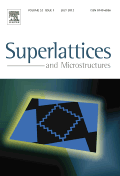
SUPERLATTICES AND MICROSTRUCTURES
Fostering collaboration in the realm of electrical engineering.SUPERLATTICES AND MICROSTRUCTURES is a premier journal dedicated to the exploration and dissemination of cutting-edge research in the fields of Condensed Matter Physics, Electrical and Electronic Engineering, and Materials Science. Published by Academic Press Ltd - Elsevier Science Ltd, this journal has established itself as an important platform for scholars and industry professionals to share their findings related to the design, fabrication, and application of superlattices and microstructured materials. With a commendable impact factor reflected in its rankings—positioned within the top quartile in Physics and Astronomy as well as Electrical and Electronic Engineering—it offers high visibility and influence in the academic community. The journal has covered significant contributions from 1985 to 2022, although access options have transitioned, making staying current essential for researchers and practitioners alike. This journal not only serves as a repository of knowledge but also fosters collaboration and innovation in materials science and related disciplines.

Materials Chemistry Frontiers
Elevating Knowledge in the World of Materials ChemistryMaterials Chemistry Frontiers, published by the esteemed Royal Society of Chemistry, stands as a leading journal in the realm of materials science and chemistry, with an impressive Q1 ranking in both Materials Chemistry and Materials Science categories as of 2023. This open-access journal, operating from the United Kingdom, offers a platform for researchers, professionals, and students to disseminate high-quality, impactful research. With its E-ISSN 2052-1537, the journal is dedicated to publishing cutting-edge articles, reviews, and research communications that explore innovative materials and their applications, fostering a comprehensive understanding of the complex interplay between materials and their chemical properties. With consistent rankings in the Scopus metrics, being positioned at the 25th percentile among 317 in the Materials Chemistry category, it highlights its pivotal role in advancing the field. The journal thrives on contributions that broaden the scope of knowledge from 2017 to 2024 and beyond, solidifying its status as an essential resource for contemporary research in materials science.
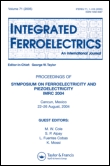
INTEGRATED FERROELECTRICS
Pioneering Insights in Ceramics and ElectronicsINTEGRATED FERROELECTRICS is a prominent academic journal published by Taylor & Francis Ltd, focusing on the interdisciplinary study of ferroelectric materials and their applications. Since its inception in 1992, it has provided a platform for high-quality research and innovative findings within fields such as ceramics and composites, condensed matter physics, and electrical engineering. Despite currently holding a Q4 quartile ranking across several categories—including Ceramics and Composites and Electrical and Electronic Engineering—the journal plays a crucial role in disseminating knowledge and fostering collaboration among scientists and engineers dedicated to advancing ferroelectric technology. With an increasing emphasis on the practical applications of electronic and optical materials, INTEGRATED FERROELECTRICS offers valuable insights for researchers, providing them with a repository of knowledge that is essential for both academic exploration and practical implementation.
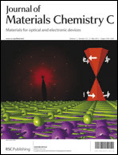
Journal of Materials Chemistry C
Pioneering Research for Tomorrow's MaterialsJournal of Materials Chemistry C, published by the renowned Royal Society of Chemistry, is a leading academic journal focusing on innovative research in the field of materials chemistry. With an impressive impact factor, this journal has solidified its status as a top-tier publication within its field, ranking in the Q1 category for both Chemistry (miscellaneous) and Materials Chemistry as of 2023. Positioned at the forefront of -materials science, it serves as a vital platform for researchers, professionals, and students to disseminate findings that highlight the synthesis, characterization, and application of advanced materials. The journal's open access model allows for broader readership and engagement, ensuring that groundbreaking research is accessible to a global audience. As a result, the Journal of Materials Chemistry C plays a crucial role in advancing the understanding and technology of materials, fostering collaboration and innovation within this dynamic scientific community.

Optoelectronics and Advanced Materials-Rapid Communications
Unveiling Breakthroughs in Optoelectronic Technologies and Materials.Optoelectronics and Advanced Materials-Rapid Communications is a pivotal journal in the field of optoelectronics, specializing in the rapid dissemination of original research and reviews concerning advanced materials and their applications. Published by the NATL INST OPTOELECTRONICS in Romania, this journal has been instrumental for researchers and professionals since its inception in 2008. With an E-ISSN of 2065-3824, it offers a platform for innovative studies across various disciplines, focusing on both theoretical and practical advancements in electrical and electronic engineering, as well as electronic, optical, and magnetic materials. Although currently categorized in the Q4 quartile based on the 2023 Scopus rankings, the journal is dedicated to enhancing its visibility and citation impact among the scientific community. By facilitating open access to cutting-edge research, Optoelectronics and Advanced Materials-Rapid Communications not only addresses the needs of emerging scholars and industry professionals but also contributes to the broader discourse on materials science. As it continues to evolve through 2024 and beyond, the journal remains an essential resource for those committed to advancing knowledge in optoelectronic technologies.
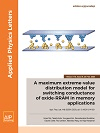
APPLIED PHYSICS LETTERS
Advancing the Frontiers of Applied Physics.Applied Physics Letters, published by AIP Publishing, is a premier journal dedicated to the rapid dissemination of research in the dynamic field of applied physics. With an ISSN of 0003-6951 and an E-ISSN of 1077-3118, the journal has carved a niche for itself since its inception in 1962, serving as a vital forum for the exchange of innovative ideas and experimental findings. As of 2023, it proudly holds a Q1 ranking in the category of Physics and Astronomy (miscellaneous), standing at rank 11 out of 81 in Scopus, reflecting its influential role in advancing scientific knowledge with an impressive 87th percentile. The journal significantly contributes to the academic community by providing an accessible platform for both groundbreaking theoretical and applied research. Researchers and professionals alike benefit from its rigorous peer-review process and timely publication, fostering collaboration and dialogue among experts in the field. While the journal currently operates under a subscription model, its comprehensive scope encourages submissions covering all aspects of applied physics, making it an essential resource for researchers and students eager to stay at the forefront of this ever-evolving discipline.

SEMICONDUCTORS
Innovating the future of electronic and optical materials.SEMICONDUCTORS, published by PLEIADES PUBLISHING INC, is a prominent journal that provides a platform for researchers and professionals in the fields of Atomic and Molecular Physics, Condensed Matter Physics, and Electronic, Optical and Magnetic Materials. With an ISSN of 1063-7826 and an E-ISSN of 1090-6479, the journal has been diligently disseminating knowledge since its inception in 1996 and continues to pave the way for innovative research until 2024. Although currently unclassified in the Open Access model, its influence is underscored by its rankings in Scopus, where it ranks in the 21st-22nd percentile across critical scientific categories. SEMICONDUCTORS serves as an essential resource for cutting-edge research, fostering a greater understanding of semiconductor materials and their applications, thereby assisting the scientific community in pushing the boundaries of technology and innovation.

ADVANCED FUNCTIONAL MATERIALS
Bridging Theory and Application in Functional MaterialsADVANCED FUNCTIONAL MATERIALS is a leading journal published by WILEY-V C H VERLAG GMBH, prominently recognized in the fields of biomaterials, chemistry, condensed matter physics, and materials science. With an impressive impact factor and a distinguished position in the Q1 quartile across multiple categories including nanoscience and nanotechnology, this journal serves as a vital platform for researchers and professionals committed to innovating in functional materials. Since its inception in 2000, ADVANCED FUNCTIONAL MATERIALS has published high-quality peer-reviewed articles that push the boundaries of materials science, exploring new frontiers in electronic, optical, and magnetic materials. The journal's dedication to open access ensures that its groundbreaking findings are readily available to a global audience, fostering collaboration and knowledge-sharing among scholars and practitioners in the field. For those seeking to stay at the forefront of materials research, ADVANCED FUNCTIONAL MATERIALS is an essential resource.